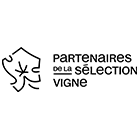Note on clone

-
Note on clone table
-
Identity and availability
- Origin: Region, department or vineyard in which the clone head strain was identified and selected.
- Year of approval: Year during which the clone was approved by the CTPS vine section.
- Propagating surface area: Surface area in ha of propagating mother vines which allows the available potential to be assessed. For clones whose surface area is between 0.01 and 0.10 ha, it is indicated < 0.10 ha. For clones whose distribution is very limited but for which technical information is available, it is indicated < 0.01 ha. For the other clones, it is indicated “lowly distributed clone”, which means that the clone has recently been approved or that it has not been multiplied. In both cases, only the initial material is planted in the selection centers.
- Selection: Organization(s) having carried out the selection of the clone. For clones approved after 1999, the name of the IFV partner(s) having participated in the genetic selection work of the variety in question is thus associated. (NB: CA = Chamber of Agriculture).
- Agronomic references: Region, department or vineyard in which the agronomic and technological data were collected.
-
Agronomic data
- Fertility: this is the ratio between the number of clusters and the number of buds left at the pruning.
- Cluster weight: is indicated relative to the mean of the clone population. To have a more precise indication of the weight of the bunches, you must refer to the average weight as given in the variety description sheets.
- Berry size: is indicated in relation to the average of the clone population.
- Level of production: this notion results from the component of fertility, the weight of the clusters and the size of the berries.
- Vigor: in most cases this is a rating based on measuring the weight of pruned wood.
- Susceptibility to Botrytis: in most cases this is a visual assessment of gray rot attacks expressed in frequency (number of affected clusters) and intensity (extent of damage to affected clusters). The notion of sensitivity is to be compared to the architecture of clusters and their compactness.
-
Technological data
- Sugar content: this is the richness measured at maturity, compared with the average of all the clones observed in the same situation.
- Total acidity: this is the acidity measured on the must at maturity or the acidity measured on the finished wine, compared with the average of all the clones observed in a given situation.
- Aromatic intensity: this notion comes from tasting comments and mainly concerns clones of white grape varieties
- Color potential: the assessment of this parameter comes from tasting comments and also from analyzes of the must at maturity or of finished wines (shade, coloring intensity).
- Tannic structure: the assessment of this parameter comes from tasting comments and also from analyzes of the must at maturity or of finished wines (total polyphenol index, for example).
- Oenological skills: these are essentially tasting comments aimed at defining the profile of the wines obtained with the clone considered.
-
Additional comments
These comments are placed on a line below the data of the clone considered, and bring together elements of description specific to this clone or relate to its health status with respect to winding 2, its cycle, its phenotypic characteristics or its technological potential.
About
PlantGrape supports agricultural research and sustainable development.




